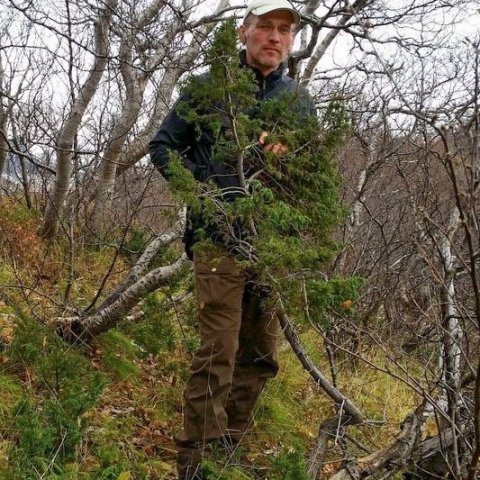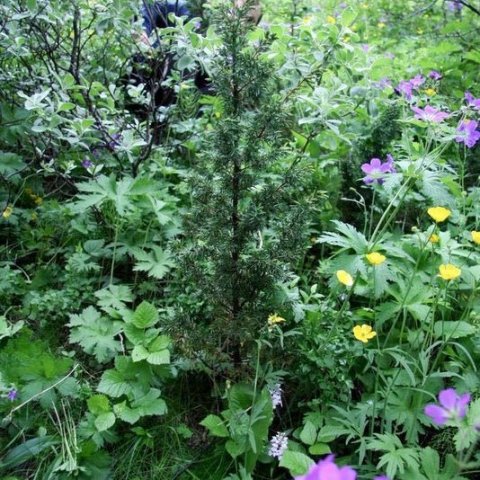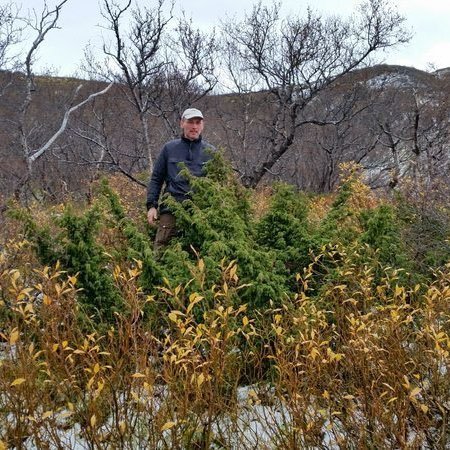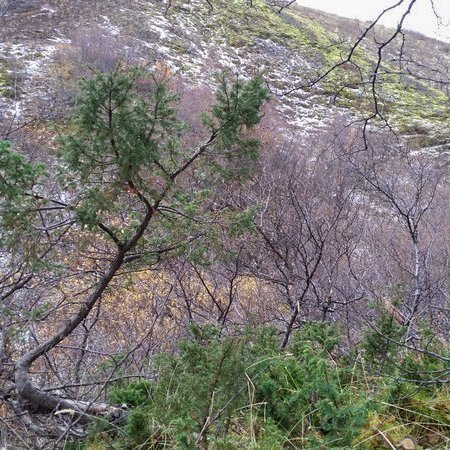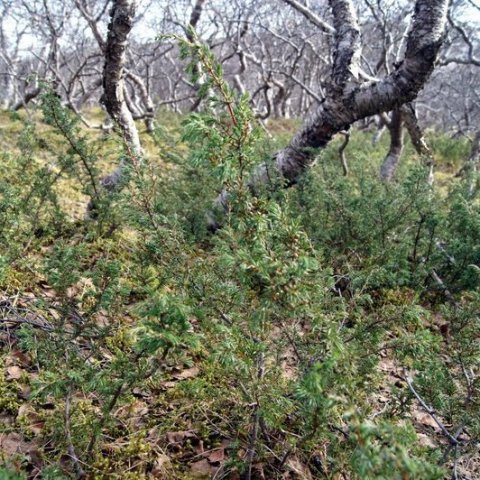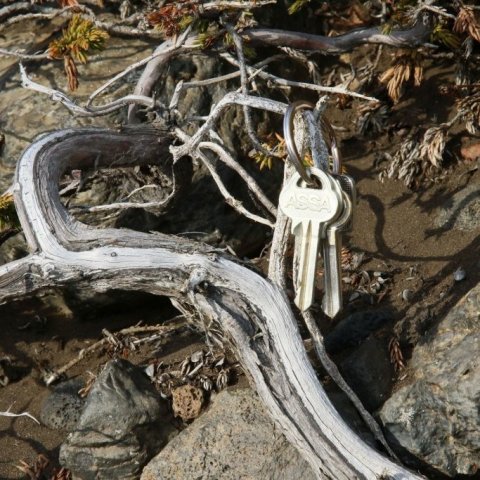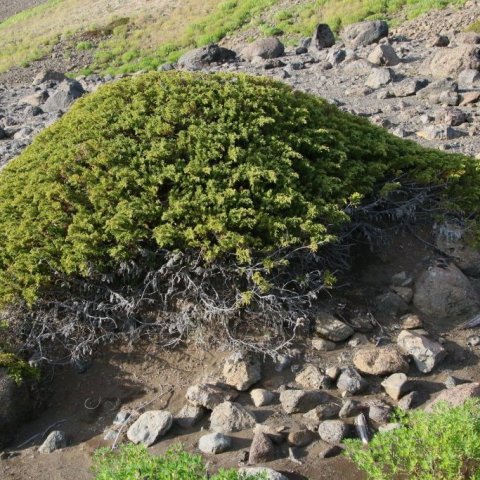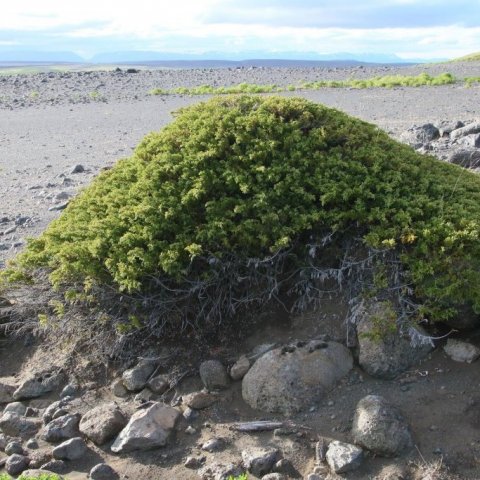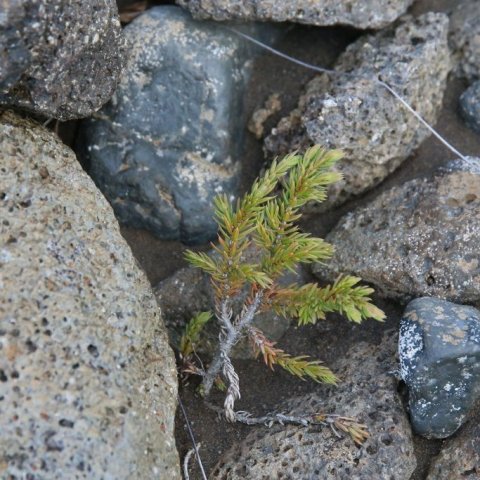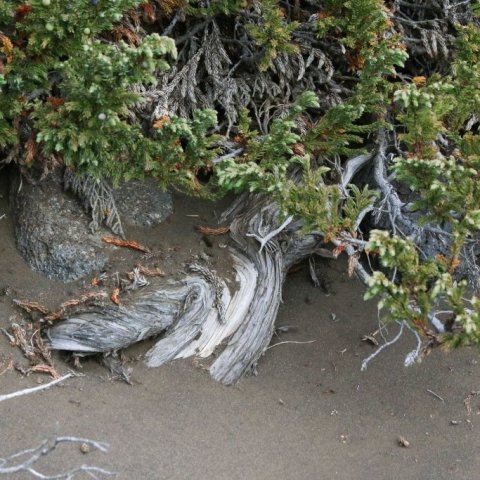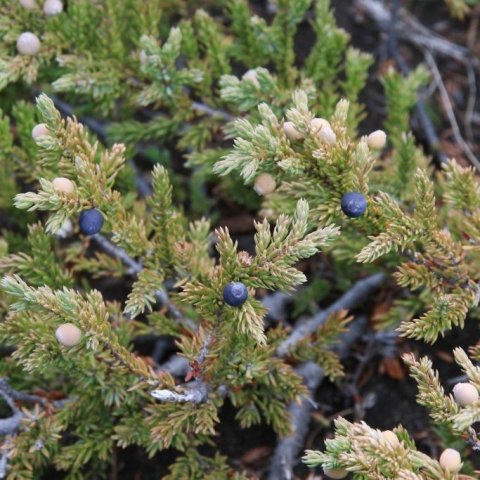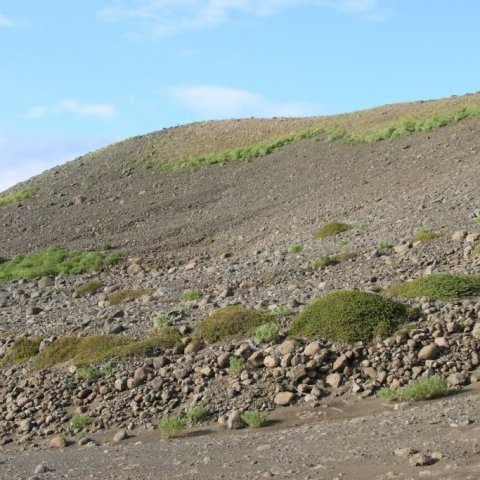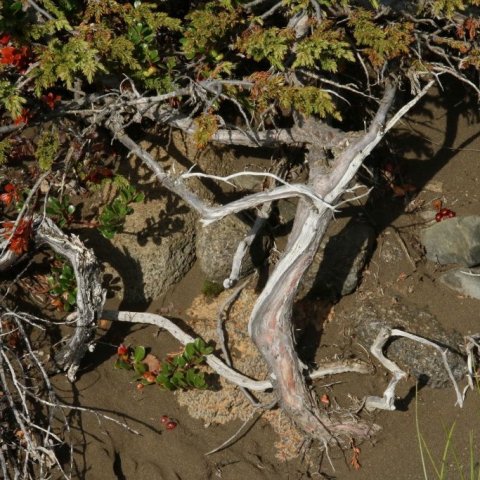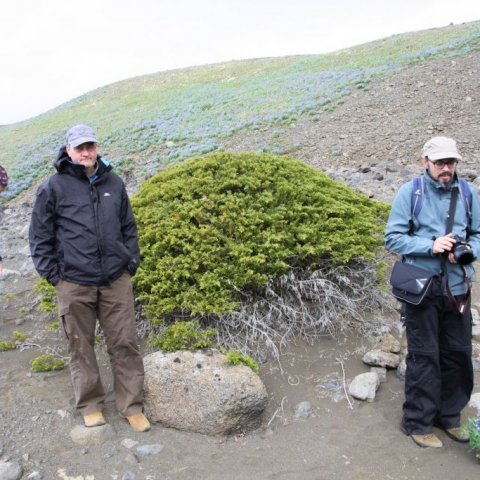Oldest "tree" in Iceland about 280 years of age
24.05.2023

A "mound" of juniper in the desertified land of Hólasandur. Somehow the junipers have managed to survive the plant-extinction in the area caused by centuries of unsustainable land use. Photo: Pétur Halldórsson
At least 250 tree rings have been counted in a common juniper tree at Hólasandur land reclamation area which lies jus north of the Lake Mývatn Nature Reserve in North Iceland. That individual plant is therefore the oldest "tree" known to grow in Iceland. Great magnification is needed to count the superthin tree rings of the Icelandic juniper which is very slow-growing.
Iceland's main expert in dendrochronology works at the Icelandic Forest Service, PhD Ólafur Eggertsson. He works as a researcher at the Icelandic Forest Research' facilities at Mógilsá in the vicinity of the capital Reykjavík, specialising in wood science and dendrochronology research, research on driftwood and more. Dendrochronology, a scientific discipline also called tree-ring dating, is concerned with the dating and interpreting of past events, particularly paleoclimates and climatic trends, through the analysis of tree rings.
A prominent subject in dendrochronolgy is to establish chronologies (calendars) based on tree rings that reach way back in time, the longest spanning several thousand years. In Iceland, the only tree forest forming tree species is downy birch, which doesn't grow particularly old. Apart from that, little to none has survived of older wood through the centuries which in other countries survives in historical buildings or any other substantial items made from wood. In Iceland namely, housing was almost exclusively consisted of primitive turf houses, which were exceptionally prone to decay and had to be rebuilt frequently.
In an recent interview on the Channel 1 on the Icelandic National Radio RUV, Ólafur explained his research fields and gave higlights of the topics of an annual European conference of dendrochronologists recently held in Portugal. Asked about the oldest trees in Iceland, Ólafur reported that a few years ago, nearly 200 tree rings were discovered in a single birch tree in Gatnaskógur Forest in East Iceland, just beside the famous National Forest Hallormsstaðaskógur in the valley Fljótsdalur. Shortly, that was considered the oldest known living tree specimen in Iceland but that were soon to change.
During research in collaboration with the Icelandic Soil Conservation Service Landgræðslan and researchers from abroad, venerable "mounds" of juniper were explored, sitting almost as the only vegetation left in an area of Hólasandur in North Iceland, where severe land erosion almost left the land totally barren after centuries of unsustainable land use. Somehow the junipers managed to survive. Slices of stems have to be cut to make it possible to count the tree rings in such exceptionally slow-growing "trees", instead of the common method of taking bore samples. By cutting a dead twig found in the area, Ólafur and his team were able to take useable samples. From the samples they analysed and counted about 250 tree rings, assuming that the individual would be a few decades older than that, probably about 280 years old or so. As other similar examples of juniper are growing in the area, this means that the oldest known trees in Iceland are probably around that age.
The common juniper is the only native conifer in Iceland, in other words the only conifer species that grew in Iceland before colonization. It is rather common in lowland areas almost all over the country, except in the Húnavatn counties in the north and in the Rangárvalla and Skaftafells counties in the south (Hörður Kristinsson - floraislands.is). It grows mainly in moors and heathlands, lavafields, thickets and hillsides, normally as a rather low-growing, spindly shrub. Although it sometimes shows tendencies of upright growth and can reach a maximum height of about two meters, it is usually very low, about 30 to 120 centimeters in height.
And even if the word "tree" has been put in quotation marks here, the juniper is truly one of the five native tree species in Iceland. The common definition of a tree species is a perennial woody plant reaching at least 5 m of height somewhere in its natural range. The common juniper reaches such height in many countries and is therefore considered a type of tree. The fact that it does not reach a height of 5 m in certain parts of its distribution area (e.g. in Iceland) does not change the fact that it is a tree species. Along with the warming climate in recent years, it seems that in some areas the Icelandic juniper is raising itself more into the air than before, for example in the Thórsmörk Conservation Area in South Iceland and in Fnjóskadalur Valley in the north. Who knows if it will be able to do its rightful share in the group of tree species in Iceland in the future.
The juniper is a dioecious plant, meaning that some individuals have female reproductive structures and other male ones. The juniper berries or berry cones take two growing seasons to ripen. They are used as a spice in cooking and for strong liquors such as gin.
- On common uniper on the IFS tree species' website
- The interview with PhD Ólafur Eggertsson in the radio program Samfélagið

